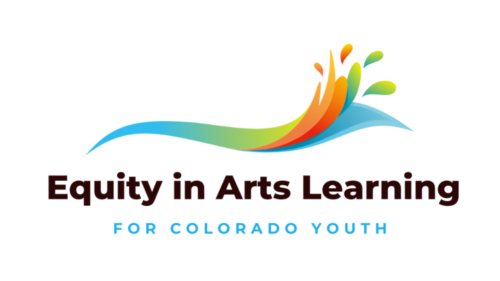
Equity in Arts Learning for Colorado Youth (EAL) seeks to increase access to arts education for historically marginalized youth. Grants of $10,000-$25,000 are available to support projects that bring professional artists and culture bearers into educational settings to lead programming with Pre-K to High School youth ages 4-21. Projects supported by EAL will exemplify the value of arts education, encouraging ongoing community support. To apply:
- EAL will be open for Letters of Intent on September 23, 2025 and close November 21, 2025.
- You will need to create a free Submittable account, or sign in with Google or Facebook credentials in order to submit to these forms.
- You can save a draft of your work if you would like to finish filling out the form at a later date.
- If you need to make changes to your form, please withdraw your submission and resubmit.
- If anything changes with the information you submitted, please request to edit the submission
- Our platform works best on Google Chrome, Firefox, and Safari. Internet Explorer is not supported. Please make sure you are using a supported browser, and that the files are valid file types. You can find the acceptable file types under the "Choose File" button on the application.
- We will follow-up with you about your submission by email. Please be sure to safelist notification emails from Submittable and check the email you used to sign up for your Submittable Account regularly.
- Check out the Submitter Resource Center for help videos and articles or to reach out to Submittable's Customer Support team with any technical questions.

Funding Opportunity
Equity in Arts Learning for Colorado Youth (EAL) seeks to increase access to arts education for historically marginalized youth. Grants of $10,000-$25,000 are available to support projects that bring professional artists and culture bearers into educational settings to lead programming with youth ages 4-21 in grades PK-12. Projects supported by EAL will exemplify the value of arts education, encouraging ongoing community support.
Goals of this Initiative:
- Strengthen regional efforts to improve sustained access to arts education for historically marginalized and minoritized youth (including youth who identify as BIPOC (Black, Indigenous, People of Color), LGBTQIA+ (Lesbian, Gay, Bisexual, Transgender, Queer/Questioning, Intersex, or Asexual), a person with a disability, and/or living in a rural community).
- Provide opportunities for youth ages 4-21 in grades PK-12 to work with professional artists in an educational setting, especially youth who have limited or no access to high quality, sustained arts learning.
- Heighten awareness of the impact of arts education, so that resources both financial and curricular increase state-wide, leading to more equitable access to arts education for youth.
Applicant Qualifications
Applicant must be a Colorado-based nonprofit organization, or a PK-12 school.
- School applicants must engage an artist/s or arts organization as a partner.
- Organizational applicants must:
- Be engaged with a school partner or have a strong history of working with youth
- Be registered with Colorado Secretary of State with an address in Colorado
- Have a Colorado-based staff person who will be actively engaged in the project
Funded projects may take place at schools (during the school day or after school), community centers, libraries, nonprofit arts sites, and other locations that are highly accessible to youth.
Project Design
Projects may involve any arts & culture discipline or genre, such as theater, dance, music, visual arts, media arts, literary arts, folk and traditional arts, or interdisciplinary art forms. Arts integration projects (connecting an art form with another subject area) are encouraged. Projects should:
- Take place over a period of time that allows for depth of learning and relationship building. Ideally, projects take place over the course of six weeks or longer.
- Center the identities and needs of youth. Youth should be consulted in the project’s design and be able to influence the project’s evolution along the way.
- Fill a clear gap in the school or community. The rationale for the project should be informed by the stated needs of the student and community.
- Engage experienced artists and culture bearers. Teaching artists should have a successful record of working with youth, and whose identities reflect the youth participants.
- Be highly accessible to youth participants. A fee may not be charged for participation, and it must take place in a setting that youth are able to easily get to.
- Allow for time and resources to measure and communicate the project’s value and impact. Evaluation results will be collectively shared.
Examples of projects:
- An artist residency in which students create a mural reflecting their school culture.
- A visiting musician works with youth at a local community center to create songs expressing their cultural identities.
- A media artist supports youth in creating a podcast featuring interviews with community elders.
- Youth write and produce a one-act play with guidance from a theater teaching artist using vignettes from their daily lives.
The following are not eligible for EAL funding:
- Programs that charge a fee to participants
- PK-12 staff salaries (Teacher stipends are allowable)
- General operating costs unrelated to the proposed project
- Capital improvement projects
Application Timeline 2025
- Letters of Intent accepted September 26, 2024 – November 22, 2024
- Invitations to Apply – Sent by January 20, 2025
- Full Application Due – February 21, 2025
- Award Notifications – Mid/Late April, 2025
- Projects Take Place – July 1, 2025 – June 30, 2026
- Final Report Due – Thirty days after completion of project, and no later than July 31, 2026
